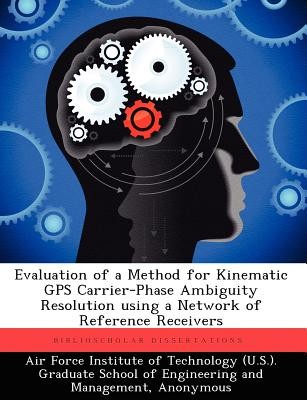
- We will send in 10–14 business days.
- Publisher: BiblioScholar
- ISBN-10: 1249449499
- ISBN-13: 9781249449492
- Format: 18.9 x 24.6 x 0.4 cm, softcover
- Language: English
- SAVE -10% with code: EXTRA
Evaluation of a Method for Kinematic GPS Carrier-Phase Ambiguity Resolution using a Network of Reference Receivers (e-book) (used book) | bookbook.eu
Reviews
Description
New applications for GPS have driven a demand for increased positioning accuracy. The emerging GPS technology particularly affects the test community. The testing equipment and method must provide a solution that is an order of magnitude more precise than the tested equipment to achieve the desired accuracy. Carrier-phase differential GPS methods using a network of reference receivers can provide the centimeter-level accuracy required over a large geographical area. This thesis evaluates the performance of a 5-receiver network over a 50 km x 120 km area of New Mexico, using a GPS network algorithm called Net Adjust. The percentage of time a fixed integer solution was available for a kinematic baseline was investigated for three types of measurements. Results showed that the virtual reference receiver method using Net Adjust-corrected measurements outperformed the raw and Net Adjust-corrected file results. However, these results were only obtained for the shortest baseline receivers. The receivers with longer baselines did not experience the same degree of success, but did lead to several important insights gained from the research. Most importantly, the accuracy of the reference receiver coordinates is critical to the performance of a reference receiver network. Further testing must be accomplished before a full implementation is recommended.
EXTRA 10 % discount with code: EXTRA
The promotion ends in 17d.11:11:32
The discount code is valid when purchasing from 10 €. Discounts do not stack.
- Publisher: BiblioScholar
- ISBN-10: 1249449499
- ISBN-13: 9781249449492
- Format: 18.9 x 24.6 x 0.4 cm, softcover
- Language: English English
New applications for GPS have driven a demand for increased positioning accuracy. The emerging GPS technology particularly affects the test community. The testing equipment and method must provide a solution that is an order of magnitude more precise than the tested equipment to achieve the desired accuracy. Carrier-phase differential GPS methods using a network of reference receivers can provide the centimeter-level accuracy required over a large geographical area. This thesis evaluates the performance of a 5-receiver network over a 50 km x 120 km area of New Mexico, using a GPS network algorithm called Net Adjust. The percentage of time a fixed integer solution was available for a kinematic baseline was investigated for three types of measurements. Results showed that the virtual reference receiver method using Net Adjust-corrected measurements outperformed the raw and Net Adjust-corrected file results. However, these results were only obtained for the shortest baseline receivers. The receivers with longer baselines did not experience the same degree of success, but did lead to several important insights gained from the research. Most importantly, the accuracy of the reference receiver coordinates is critical to the performance of a reference receiver network. Further testing must be accomplished before a full implementation is recommended.


Reviews